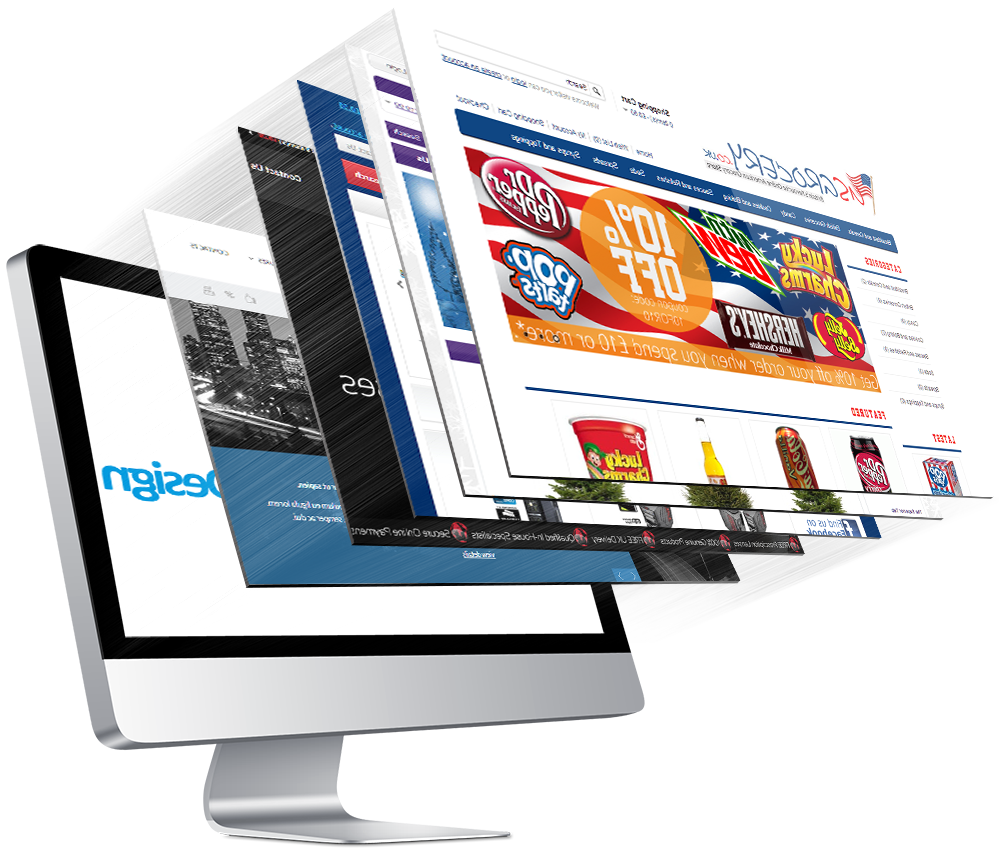How to Efficiently Incorporate Appearances and Performance in Website Design
When making an internet site, you require to strike a balance in between visual appeals and capability. It's not almost looking good; your style should also offer a function and overview users efficiently. By concentrating on simpleness and instinctive navigation, you can create an engaging experience. However what elements really boost use while preserving visual charm? Allow's explore the crucial concepts that can result in a harmonious mix of beauty and feature.
Understanding the Relevance of Visual Appeals and Capability
Comprehending the balance in between appearances and functionality is crucial for developing an efficient user experience when you develop an internet site. A visually enticing site grabs interest, but it's the performance that keeps individuals engaged. Site visitors will rapidly lose interest and leave.Consider your target audience and what draws them in if your site looks terrific yet is tough to navigate. You want to create a style that shows your brand name while making sure simplicity of use. Structured designs, intuitive navigating, and clear calls to action can enhance both looks and functionality.

Principles of Efficient Website Design
To create a reliable website design, you need to follow numerous key concepts that enhance both individual experience and visual allure. Initially, focus on simplicity; a tidy format aids customers browse conveniently. Make use of a constant shade system and typography to preserve coherence across your website. This promotes familiarity and trust.Next, guarantee your style is receptive. Users gain access to websites on different tools, so your design ought to adjust perfectly. Focus on aesthetic pecking order; highlight crucial components with placement, shade, or dimension to direct customers' focus.Finally, incorporate adequate white space. It protects against clutter and makes content much more digestible. Keep in mind, reliable internet style balances aesthetics and functionality, so every style option should offer an objective. By adhering to these concepts, you'll produce a site that's not only visually appealing yet additionally easy to use, eventually maintaining site visitors engaged and encouraging them to return.
Focusing On User Experience
When focusing on individual experience, you'll intend to start by comprehending what your customers absolutely require. Streamlining navigating style can make a substantial difference in how easily they discover what they're trying to find. Likewise, enhancing visual pecking order helps assist their interest to one of the most vital aspects on your website.
Understanding Customer Needs
Comprehending customer needs is necessary for creating an interesting internet experience that keeps site visitors coming back. To achieve this, you have to identify the goals and choices of your target market. Beginning by conducting customer research study, like surveys or meetings, to gather insights on what individuals worth most. When interacting with comparable web sites, pay interest to their discomfort points and difficulties. This details permits you to customize your style, making certain functionality straightens with customer expectations. In addition, think about producing user characters that represent different sections of your target market, aiding you envision their requirements throughout the layout procedure. When you focus on recognizing user needs, you produce an internet site that not only looks excellent yet also provides a smooth, pleasurable experience that cultivates commitment.
Simplifying Navigating Style

Enhancing Visual Hierarchy
A solid aesthetic pecking order is vital in leading users via your web site and ensuring they involve with vital content. To achieve this, utilize color, dimension, and spacing strategically. Make crucial components like headings larger and bolder than body message, drawing focus immediately. Utilize contrasting shades to highlight contact us to activity, encouraging clicks. Additionally, employ ample white space to different areas, making material digestible and inviting.Consider the circulation of information; set up aspects rationally, leading individuals' eyes from one indicate the next. Usage visual hints, like arrowheads or lines, to guide focus. By prioritizing aesthetic power structure, you enhance user experience and enhance the likelihood of conversions, guaranteeing your internet site is both aesthetically pleasing and functionally efficient.
Shade Concept and Its Influence On Usability
While choosing the right shades for your site might appear like a minor detail, it substantially affects usability and individual experience. Color influences just how individuals view details and can prevent or improve navigating. Contrasting shades can aid important aspects stand out, making it simpler for site visitors to find what they need.Additionally, think about the psychology of shades: blue typically inspires trust fund, while red develops necessity. Recognizing your target market can lead your shade choices, assuring they reverberate well.Moreover, regular color pattern aid build brand identification, making your web site extra memorable. However, be careful-- too lots of colors can overwhelm customers. Stay with a minimal palette that enhances your web content and keeps clarity.Incorporating access is also necessary; validate your color mixes are pleasant for those with aesthetic problems. By attentively applying color concept, you'll boost functionality and create a much more interesting customer experience.
Typography: Balancing Style and Readability
Shade selections established the phase for your website, but typography plays an equally vital role in boosting individual experience. You want your message to interact clearly while additionally showing your brand name's character. Start by choosing typefaces that are not only attractive this page but additionally clear. Sans-serif fonts typically function well for my review here electronic screens, as they're easier to check out at various sizes.Maintain a power structure by utilizing different typeface dimensions and weights; this guides users via your web content effortlessly. Take into consideration line spacing and letter spacing; as well tight can discourage readers, while also loose can interrupt the flow. Limit your font choices to 2 or three to maintain the design cohesive.Finally, constantly check your typography throughout various tools and internet browsers. What looks good on one display might not on one more. Balancing style with readability assurances that your message reverberates, maintaining your target market informed and involved.
Receptive Design: Making Aesthetics Work With All Gadgets
To assure your site looks great on any kind of device, you'll require to embrace responsive layout principles. This technique assurances your website adapts to various display dimensions, giving an optimal user experience. Begin by utilizing liquid grids and versatile images that scale flawlessly. Rather of taken care of dimensions, select percents and relative units, allowing your layout to readjust dynamically.Next, carry out media queries in your CSS. These allow you use different designs based upon tool features, like screen width. This means, you can maintain visual allure while ensuring functionality.Don' t forget touch targets; make specific switches and web links are simple to touch on smaller sized screens. Focus on vital content, so users can easily browse your site no matter their device. By concentrating on these components, you'll develop an appealing, visually appealing experience that satisfies the requirements of all users, whether they're on a desktop, smartphone, or tablet .
Carrying Out Functionality Screening for Constant Enhancement
To boost your internet layout, you need to set clear usability goals that align with individual demands. By carrying out user tests, you can gather important comments on just how actual individuals communicate with your site. Examining these outcomes will certainly aid you make educated enhancements and develop a more effective user experience.
Defining Functionality Goals
While visual appeals can draw users in, specifying usability goals is vital for guaranteeing their experience continues to be seamless and satisfying. Begin by recognizing what you want users to attain on your site (website design london Ontario). Consider their habits, jobs, and requirements. Are they searching for information, buying, or enrolling in an e-newsletter? Develop clear benchmarks to measure success, browse around here like task completion rates or time on job. Prioritize intuitive navigating, accessible material, and receptive style to boost usability. Consistently revisit these goals as user assumptions advance. By defining usability goals, you produce a framework for examining and improving your website's performance. This focus on usability not just enhances user satisfaction but also reinforces the general efficiency of your layout
Performing User Tests
Performing user tests is essential for fine-tuning your web site and ensuring it meets your audience's requirements. Start by identifying your target individuals and creating an examination plan that describes your goals. Make use of a mix of measurable and qualitative methods, such as surveys, meetings, and task-based monitorings, to gather thorough comments. Welcome participants to browse your site while you observe their communications and note any kind of troubles they experience. Motivate open discussion to catch their thoughts and feelings about the style and performance. Keep sessions short and concentrated, guaranteeing you cover essential areas without overwhelming users. Make certain to document all findings, as this information will be indispensable for making informed layout choices that improve both looks and usability.
Examining Test Outcomes
Just how can you effectively analyze the outcomes of your usability tests to drive continual renovation? Start by classifying feedback right into typical themes. Seek patterns in individual habits that highlight pain points or locations for enhancement. Use quantitative data, like job conclusion rates and time on task, to measure functionality fairly. Don't neglect to take into account qualitative insights from user comments; they typically expose underlying concerns that numbers can't reveal. Focus on one of the most impactful findings and develop actionable things for your layout team. Remember, it has to do with iterating-- carry out modifications, then examination once again. This cycle of testing, assessing, and refining aids you equilibrium aesthetics and functionality, guaranteeing your internet site fulfills individual demands effectively while maintaining aesthetic allure.
Often Asked Concerns
How Do I Select the Right Color Palette for My Web site?
To pick the appropriate shade scheme for your website, consider your brand's character, target audience, and psychological influence (website design london Ontario). Usage shade psychology, produce harmony, and assurance readability. Examination mixes to see what resonates best with visitors
What Equipment Can Aid With Website Design Looks and Functionality?
You can make use of tools like Adobe XD, Figma, and Sketch to improve your web style's visual appeals and performance. These systems use user-friendly interfaces, partnership functions, and pre-made layouts to streamline your innovative process and boost your layouts.
Just How Can I Integrate Animations Without Compromising Performance?
To incorporate computer animations without compromising functionality, prioritize subtle results that boost user experience. Use CSS computer animations for smoother interactions, warranty fast tons times, and test on different devices to preserve efficiency while including visual charm.
What Are Typical Errors to Avoid in Website Design Looks?
When designing, avoid chaotic designs, inadequate shade choices, and irregular fonts. Don't forget mobile responsiveness, as it can push away customers. Verify your layout aligns with your brand name, developing a seamless experience that engages site visitors successfully.
How Usually Should I Update My Site's Design for Optimum Looks?
You should upgrade your website's style every 1-2 years to stay on par with patterns and keep optimal aesthetics. Consistently renewing visuals assists involve visitors and warranties your website continues to be straightforward and appealing. When you develop an internet site, understanding the balance between appearances and capability is vital for developing a reliable user experience. To produce a reliable web design, you need to adhere to a number of essential principles that boost both user experience and visual charm. Individuals accessibility internet sites on various devices, so your style needs to adjust perfectly. When prioritizing user experience, you'll desire to begin by recognizing what your customers truly need. Beginning by performing customer research study, like interviews or surveys, to collect insights on what customers worth most.